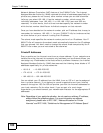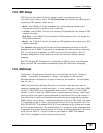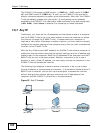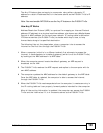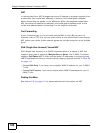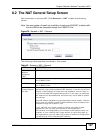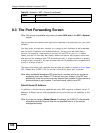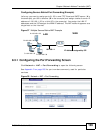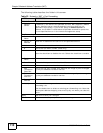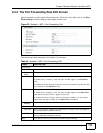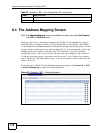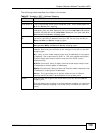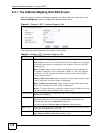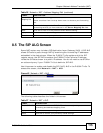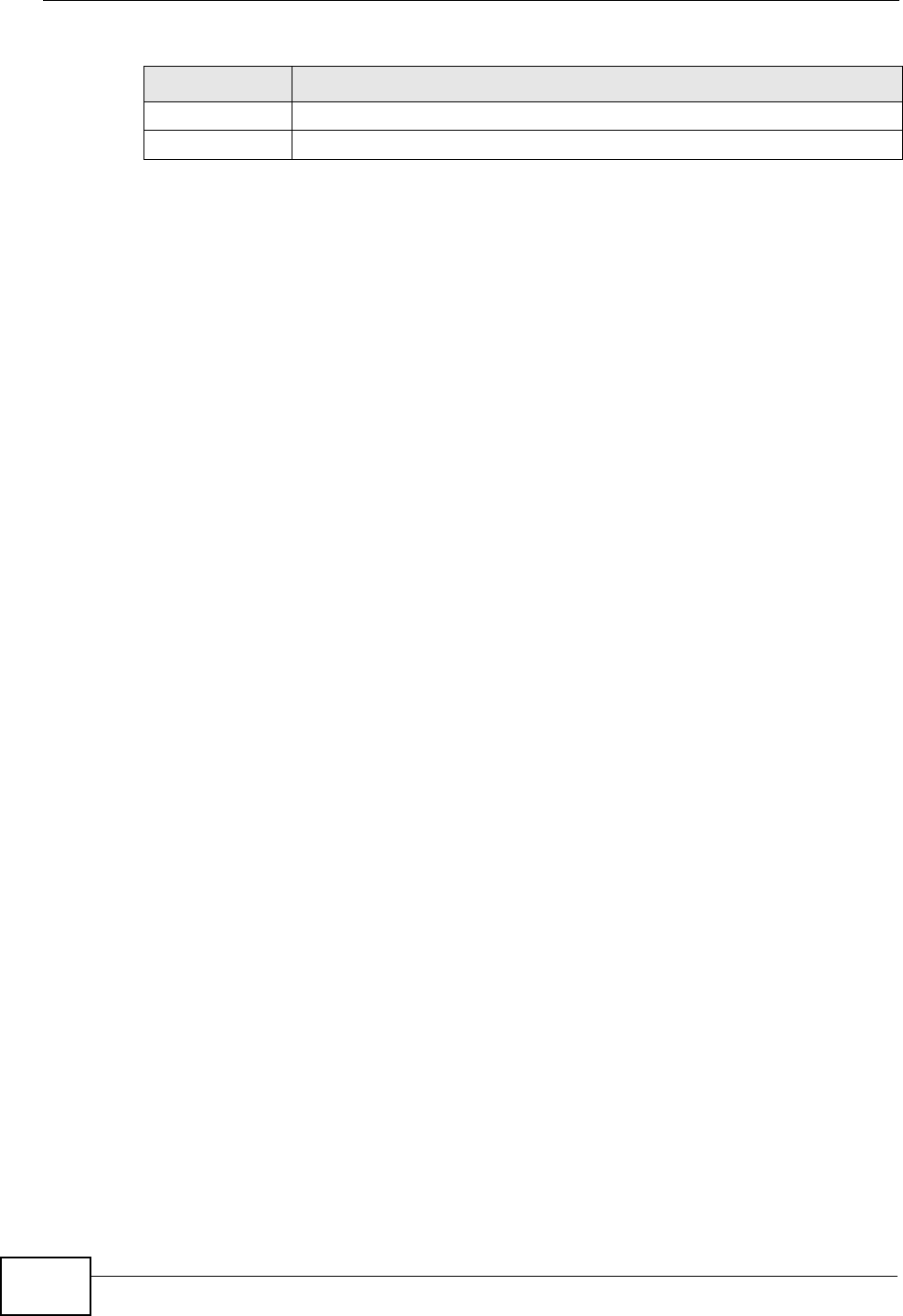
Chapter 8 Network Address Translation (NAT)
P-660H-T1v3s User’s Guide
108
8.3 The Port Forwarding Screen
Note: This screen is available only when you select SUA only in the NAT > General
screen.
Use this screen to forward incoming service requests to the server(s) on your local
network.
You may enter a single port number or a range of port numbers to be forwarded,
and the local IP address of the desired server. The port number identifies a
service; for example, web service is on port 80 and FTP on port 21. In some
cases, such as for unknown services or where one server can support more than
one service (for example both FTP and web service), it might be better to specify
a range of port numbers. You can allocate a server IP address that corresponds to
a port or a range of ports.
The most often used port numbers and services are shown in Appendix D on page
255. Please refer to RFC 1700 for further information about port numbers.
Note: Many residential broadband ISP accounts do not allow you to run any server
processes (such as a Web or FTP server) from your location. Your ISP may
periodically check for servers and may suspend your account if it discovers any
active services at your location. If you are unsure, refer to your ISP.
Default Server IP Address
In addition to the servers for specified services, NAT supports a default server IP
address. A default server receives packets from ports that are not specified in this
screen.
Note: If you do not assign a Default Server IP address, the P-660H-T1v3s discards
all packets received for ports that are not specified here or in the remote
management setup.
Apply Click this to save your changes.
Cancel Click this to restore your previously saved settings.
Table 22 Network > NAT > General (continued)
LABEL DESCRIPTION



